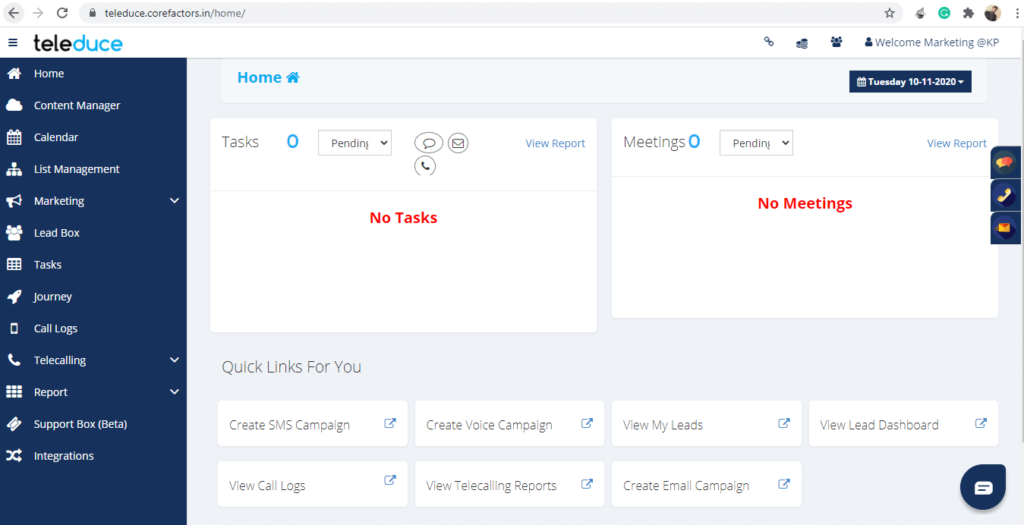Managing a real estate business is challenging, especially if your business workflow is purely manual.
Prominent real estate marketplaces such as 99acres.com help you to capture leads who inquire about properties and real estate.
CRM with 99acres.com integration ensures that you don’t miss any lead from the listing site with no manual intervention.
With this integration, you can get a thorough overview of your inventory and pipeline in a single view.
Benefits of CRM Integration with 99acres

Teleduce is an integrated platform that helps you to capture 99acres leads automatically in the lead management system when you receive a property inquiry.
Here are some benefits of this integration your business can take advantage of:
All Leads Classified
Your team members get notified when leads get assigned to them. They can tag leads by relevance, quality, status, location preference, budget, and more.
You can monitor the life cycle of each lead and analyze the most relevant platforms that provide qualified leads, thus improving your productivity and return on investment of your advertising spend.
Auto-Distribution Of Leads
Distribute leads automatically to different agents, based on the location they are interested in, the kind of properties that suit them, and any other criteria that you set.
Also Read: Call Your Customers Directly From Your CRM
Track Performance
Teleduce integrates seamlessly with multiple communication channels like WhatsApp, phone, SMS, and Email.
Every communication your team has with leads gets captured in the CRM.
You can pull it up at your convenience to monitor sales team performance, for training, and other activities.
It also enables your sales team to set reminders for follow-ups and close deals quicker.
Analyze Lead Performance
Analyze how well 99acres is working for you in terms of getting closures, how long is the conversion cycle, and how much revenue is being generated from each listed property.
On The Go Integrated CRM
You get the advantage of a mobile CRM with Teleduce. Access the dashboards, reports, and everything on your mobile device.
You can stay informed about your sales team’s performance, inventory, and pipeline.
Get real-time data anywhere on the go using the mobile-friendly CRM software and take quick action to ensure there’s no lead leakage.
Also Read: Everything You Need To Know About Best Lead Management System
How to Integrate 99acres in Teleduce?
With your internet browser, visit teleduce.corefactors.in. Once you log in, you will land on the dashboard. At the bottom of the left-hand side menu, find ‘integrations’ and click it.

After clicking the ‘Integrations’ button, you will be able to see the ‘Third Party Integrations’ page.
Find the 99acres logo in the ‘marketplace’ section. Now click the ‘connect’ button which is located right below the 99 acres logo.

A dialogue box will appear on your screen after you click on the connect button. Send this displayed URL to the 99acres team for configuration.

Now, you will start receiving leads directly into the Leadbox module of Teleduce after the 99acres team completes the integration. To check the leads, just select the source as 99acres

Conclusion
As a real estate business, you should not miss any leads coming your way.
This integration of 99aces is really useful in capturing all lead inquiries and gives you the chance to nurture them and close more deals.
Implement Teleduce, an integrated sales, and marketing platform that helps your business to sell and scale faster.
Bonus: You don’t need any third-party tool to capture leads. Teleduce can directly integrate with more than 50+ marketplaces.










